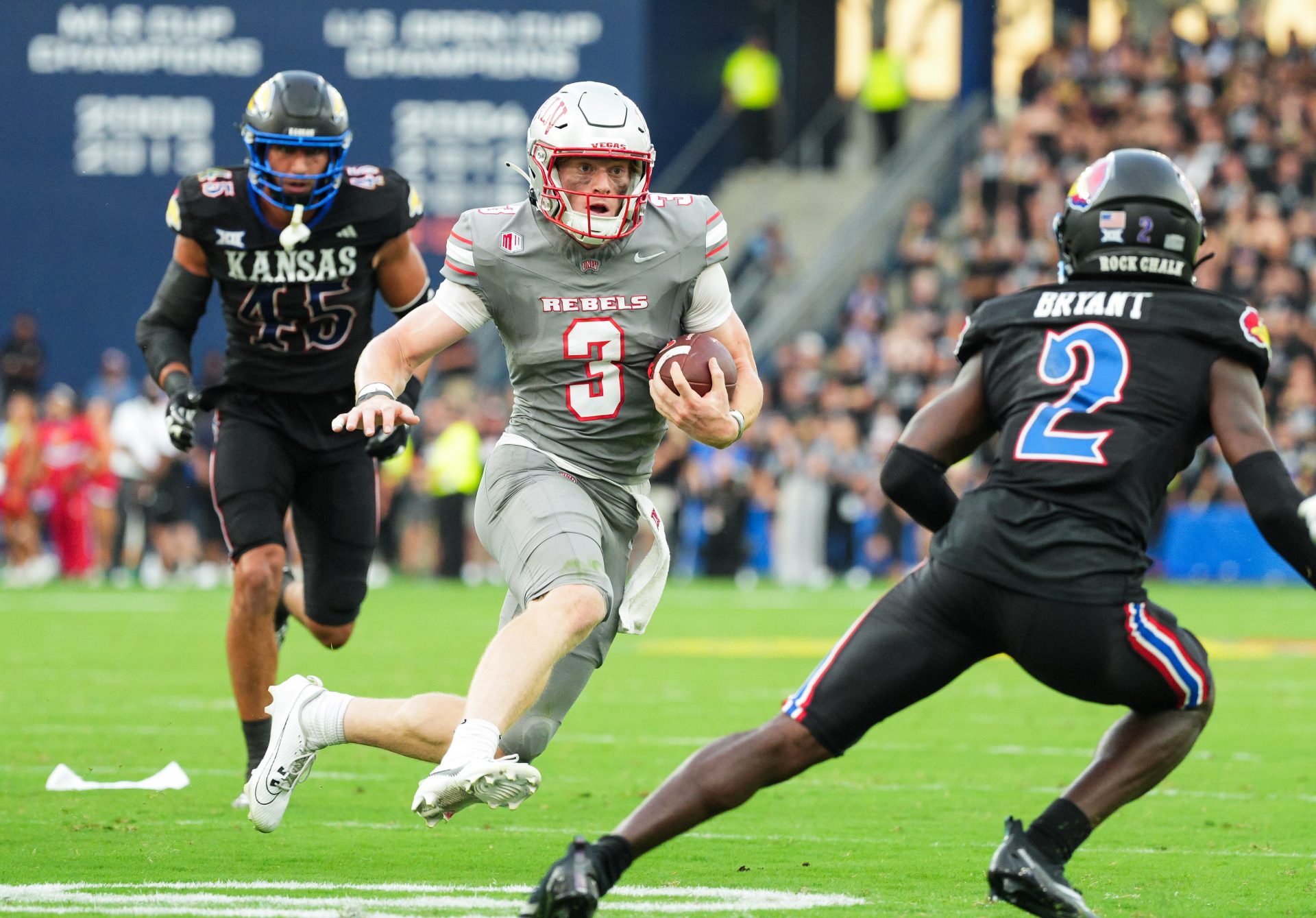As the Matthew Sluka situation at UNLV brings the rules and regulations behind several college football topics to light, redshirting is the hot ticket in the sport right now. But what is taking a redshirt, what are the rules behind it, how can one earn a redshirt, and what else do you need to know about the student-athlete eligibility topic?

Redshirt Rules and Regulations (2024)
Simply put, a redshirt is a delay in the participation of a student-athlete. These delays are set in place to further the player’s eligibility period as collegiate athletics gives their athletes five years to participate in four seasons, typically unable to extend past six years of eligibility.
The term redshirt only applies to scholarship athletes or those athletes who are attending a college or university on an athletic scholarship.
What is a Redshirt?
During a redshirt year, student-athletes participate in classes and studies and can take part in practices and off-field activities of their scholarship program. They can even dress for their respective games, so long as they don’t exceed the current rules and limitations set forth by the NCAA.
With proper use of a redshirt year, a college athlete can play five years of a sport, using their four years of eligibility in doing so. This is where the term redshirt-freshman or redshirt-junior comes into play.
A redshirt-freshman is a college sophomore but maintained their freshman year of eligibility by garnering a redshirt.
Where Did the Word Redshirt Originate?
The term redshirt came directly from the sport of college football itself. While it’s been defined by Webster’s Dictionary as coming from the red jersey that such players would commonly wear in practice scrimmages against regular athletes, it origin dates back to the Nebraska Cornhuskers.
Warren Alfson, a guard/linebacker for the Huskers, is generally considered the first player to record a redshirt and as the inventor of the term.
MORE: Simulate the College Football Season with CFN’s College Football Playoff Predictor
Alfson, who walked on and played for the team’s freshman squad for a season, asked the school for permission to keep practicing but not to play as he continued to learn the sport. In doing so, he wore a Nebraska jersey without a number on it, thus a ‘redshirt,’ and allowed him to condition with the team while he waited for the upperclassmen to graduate.
He became an All-American in 1939 and a 16th-round NFL Draft pick of the Brooklyn Dodgers, most famous now for his contribution to common nomenclature.
How Many Games Can You Play While Maintaining A Redshirt?
Formerly, there were set snap guidelines that players had to adhere to in regards to limiting their playing time in order to maintain a redshirt.
Prior to the 2018 season, the NCAA amended a proposal from the AFCA that radically changed the redshirt rules to a simpler system. Under the 12.8.3.1.6 Exception for college football players, “a student-athlete representing a Division I institution may compete in up to four contests in a season without using a season of competition.”
Division II approved a similar redshirt rule before the 2023 season, allowing players to play in no more than three games while maintaining a redshirt season.
However, ahead of the 2024 college football season, the NCAA added an additional amendment (17.11.6.2 Annual Exemptions) that means any postseason game doesn’t count toward the four-game maximum. That includes conference championship games, bowl games, or the College Football Playoff. Essentially, a player could feasibly play nine games and still maintain a redshirt.
Other Color “Shirts” for Athletes
Besides redshirts, college athletics are synonymous with other-colored shirts in their terminology. Medical redshirts are now known as hardships or as a hardship waiver.
Grayshirt is the most commonly known other color used in college athletics. These grayshirts are unofficial members of a program and do not practice, play in games, nor receive financial retribution for attending the university from the athletic department.
MORE: See Every Team’s CFP Odds With the College Football Playoff Meter 2024
The most common occurrence of grayshirts are players who need another year after high school to prepare for college competition, whether that’s religious reasons (i.e., mission trips) or injuries sustained in high school.
Blueshirts are a less common occurrence in college athletics nowadays and refer to athletes who never made official visits, nor did they meet with school athletic employees yet participate in one way or another. Think a walk-on athlete.
These blueshirts can receive scholarships once enrolled, and their scholarships count toward the following year’s quota.
College Football Network has you covered with the latest from the ACC, Big Ten, Big 12, SEC, and every Group of Five conference and FBS Independent program.

